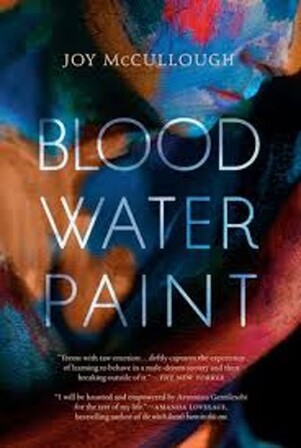Take a look at some of her previous offerings. The titles alone let you know you are in for a treat.
(2015, December, 30). Reflections on Jack Gantos’ Dead End in Norvelt, Love It or List It, and Place Loyalty
(2016, Aug, 3) Engaging Students as Curriculum Designers: Reflections on an Insight Session at the 2016, YSU English Festival
(May 16, 2017) "Let's Play a Game: 5 of..."
(December 19, 2017) “…To Keep the Ghosts Away”: Images of Purgatory in Kate DiCamillo’s Because of Winn-Dixie by Stacy Graber
(Jan. 17, 2019) A Return to the Panopticon in Murphy’s Dumplin’, and Why You Probably Won’t Get Murdered in a Joyce Carol Oates Story if You Are a Size 14 or Over by Stacey Graber
(March 8, 2019) On the Semiotics of Toys and YAL as a Strategy in Defense of the Humanities by Stacy Graber
(Oct 23, 2019) Framing Kafka: YA Texts that Build Background Knowledge Toward Teaching Franz Kafka by Stacy Graber
(Dec 4, 2019) Art in Literature/Literature in Art: Notes on 3 Exceptional Works of YA Graphica by Stacy Graber
Once again her reflections and commentary on McCullough's wonderful novel, Blood Water Paint are spot on.
Thanks Stacy
Bringing Critical Conversations on Art into Public View: McCullough’s (2018) Blood Water Paint and the Legacy of John Berger
by Stacy Graber, Youngstown State University
This causes me to think about my first acquaintance with theory and a writer whose life and work influenced me deeply by the poetic candor of his prose and his uncompromising interrogation of inequality, particularly as naturalized in the practices and artifacts of visual culture. I am talking about John Berger (1972) and his incomparable collection of essays, Ways of Seeing, which originated as a series of videos produced for the BBC and brought critical considerations of art into public view.
Berger (1972) comes immediately to mind when reading Joy McCullough’s (2018) Blood Water Paint, a YA work of historical fiction on the life of Artemisia Gentileschi, a gifted painter of the 17th century. Meaning, everywhere in the account is evident Berger’s indictment of an artistic tradition complicit in solidifying the secondary status of women as expressed by the phrase: “Men act and women appear” (Berger, 1972, p. 47). With this analytic tool, Berger (1972) unpacks key European oil paintings including Susanna and the Elders—McCullough’s central allegory for illustrating how just being a woman can occasion violence—to show how classical artists positioned women as objects of the gaze to confirm the power and pleasure of a male spectator/possessor (p. 56). Moreover, Berger (1972) argues that these optics translate to grotesque social effects when they transform subjects to objects and activate a relentless system of surveillance, dehumanization, and commodification.
The lesson is harsh and necessary, and it begs the question: Who is the audience for this book? I considered that seriously upon offering McCullough’s (2018) literary account of Gentileschi to the students in my college-level YAL course (many of whom are teacher candidates), for I generally propose new YA titles as templates for doing critical-interdisciplinary work at the secondary level. I knew I could make a case for its viability as a whole-class reading with secondary students in the same way that I would teach Virginia Woolf (1929/2005) who staked out the identical ideological terrain, also through a character named “Judith” (see the account of “Shakespeare’s Sister,” section 3 from A Room of One’s Own). Yet, I wondered about the level of background knowledge required for studying McCullough’s complex rumination on the difficulty of being an artist (a theme and chapter title in Permanent Red (Berger, 1985)), biblical history, visual analysis, trauma, and misogyny.
McCullough’s (2018) book very poignantly and personally tracks the kinds of impediments—real social and material circumstances delineated by Woolf (1929/2005)—that would impede and/or obviate the possibility of an artist doing meaningful, creative work: marginalization, ridicule, harassment, incredulity, dispossession, brutality, and (in a more quotidian sense) a simple lack of time to be left alone to complete something artful and whole.
I wanted to discuss McCullough’s (2018) book because it is artistically wrought and offers an engaging vehicle for enacting the work of critical pedagogy, and because an important exhibition of Artemisia Gentileschi’s work in London at the National Gallery has been delayed due to the pandemic (Note: Follow the link to an array of materials made available online in anticipation of the event, which could also contextualize a reading of McCullough’s book). Additionally, related to the legacy of Berger’s visionary criticism, McCullough’s literary portrait responds directly to Berger’s (1985) guiding, analytic question: “Does this work help or encourage [people] to know and claim their social rights?” (p. 15) in that Gentileschi successfully pursues her life and work beyond the limits of her society.
Berger, J. (1972). Ways of seeing. British Broadcasting Corporation and Penguin Books.
Berger, J. (1985). Permanent red. Writers and Readers Publishing Cooperative.
McCullough, J. (2018). Blood water paint. Penguin Books.
National Gallery, London. (2020). Artemisia. The National Gallery.
https://www.nationalgallery.org.uk/exhibitions/artemisia
Woolf, V. (2005). A room of one’s own (M. Hussey, Ed.). Harcourt. (Original work published in 1929)
Biographical Statement: Stacy Graber is an Associate Professor of English at Youngstown State University. Her areas of interest include critical theory, pedagogy, and popular culture.





 RSS Feed
RSS Feed